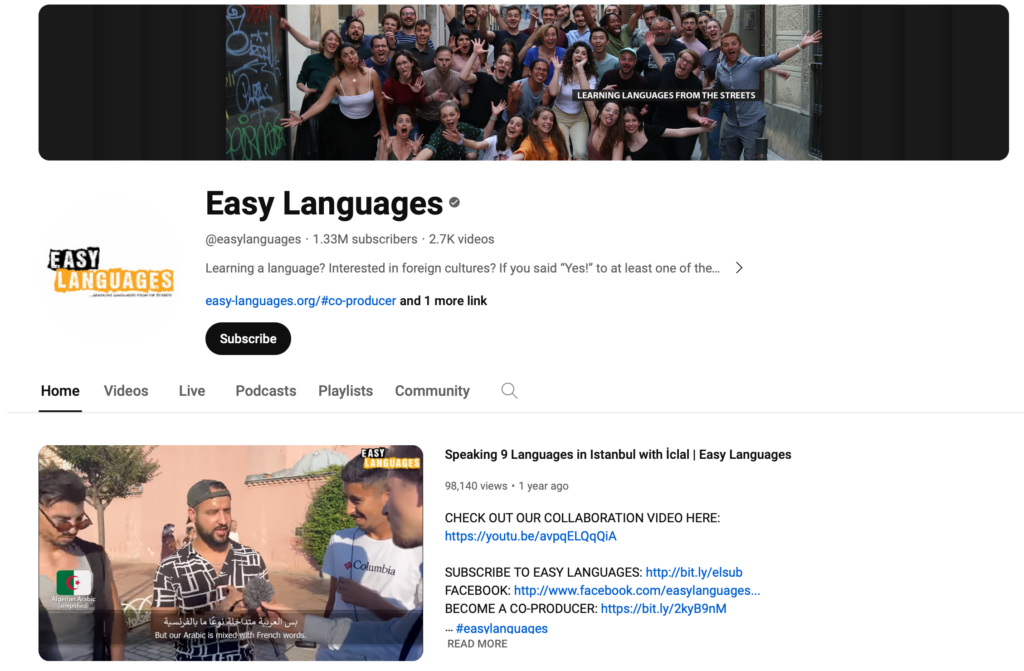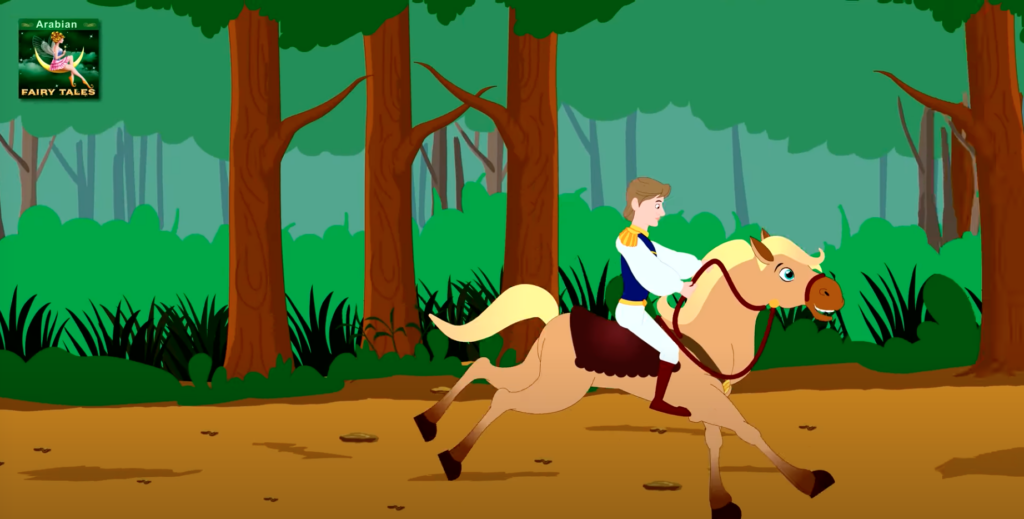Are you looking for more ways to immerse yourself in French? Podcasts are a great way to implement French into your everyday life. It’s especially important to engage with the language outside the classroom. Whether you’re taking a walk around the canyon, getting lunch in Commons, or trying to fall asleep, a podcast can add a lot more French exposure to your life. It’s a simple way to improve your French comprehension, vocabulary, and cultural knowledge. At the same time, it can be difficult to find the right one. For beginning to intermediate students, I have a recommendation for you: The Duolingo French Podcast!
Continue reading “The Duolingo French Podcast: Découvrez l’histoire de Joséphine Baker”Italki: Not offered at Reed? No worries!

If you’ve ever wanted to learn a language that isn’t offered at Reed, give Italki a try! Italki has tutors and teachers from all over the world, and languages from A-Z (literally). If you’re looking to start learning anything from Azerbaijani to Zulu, check out the site to discover what else they offer! Whether you’re just starting out or want to meet with a native speaker to improve your conversation fluency, you can find the tutor you need at the time you’re available.
Continue reading “Italki: Not offered at Reed? No worries!”They play spoons in Vermont?…

As a way to engage more of our students with language programs at Reed, we will be starting a series of interviews with our dear language tutors. Miriam (or Masha!) has a lot to share about her experience!
There is always a backstory to every language journey. Tell me more about your background and what inspired you to undertake a not-so-easy language like Russian.
Learning languages is my thing,especially being a linguistics major. I started with Hebrew, French, some Spanish and moved on to German. And coming to college I wanted something totally different which was Russian – I loved it, it’s my absolute favorite.
Continue reading “They play spoons in Vermont?…”Meow? CAT Tools for the Translator
CAT (cute abbreviation!) stands for Computer-Assisted Translation and works either in-browser or as downloaded software to assist translators in translating. I investigated three different recommended CAT tools to see how they worked, and if they would be useful for (longer) translation projects Reedies might do! All three are completely free to use, but have paid features as well.
Continue reading “Meow? CAT Tools for the Translator”Podcasts en Español
Learning a language can be exceptionally frustrating. Especially when the only times you are hearing this language is in a classroom, three times a week, for 50 minutes. You’ve probably heard your Spanish teacher tell you to listen to music and movies in Spanish since your first class in middle school. While this is good advice, it can be hard to understand music in Spanish such as Reggaeton, cumbia, or Spanish hip hop when you aren’t as familiar with the language. The words blend or maybe there is too much slang to comprehend whatever Bad Bunny or MC Solaar is saying. To that I say do not fret, podcasts are the way to go!
Continue reading “Podcasts en Español”Interview with a French Tutor
Nina: How long have you been studying French?
K: Since 7th grade!
N: What is your favorite way of practicing?
K: Just talking to other people who speak French. When I went to New York, I heard a lot of people speaking French, and I would just walk up to them and start up a conversation. Really any time I hear someone speaking French I try to speak with them. Any other way of learning just isn’t as fun. It’s necessary of course, but it isn’t as entertaining.
N: Are you ever scared to mess up? Or talk to native speakers?
K: Sometimes, but generally no, because I’m never going to see these people ever again. Also, French people abroad are just excited to speak to someone in French.
N: What is your favorite form of French media?
Continue reading “Interview with a French Tutor”Easy Languages: Something for everyone!
Easy Languages is a YouTube channel, a resource, and most importantly a community for language speakers and learners all across the globe. From Swahili to Arabic to Russian to Esperanto and Greek and Spanish, Kazakh, Turkish and many more, the scale of resources available for language learners is immense! They describe themselves as so:
“We are a non-profit project aiming to help people learn languages through authentic street interviews. Our videos show local language and culture in natural, everyday situations – something you can’t find in regular media. Each episode has a specific topic and is produced in one of our many partner countries around the world – Mexico, France, Vietnam, Russia, Egypt, to name but a few. We add subtitles in both the local language and English so that regardless of your level, you will be able to hear, read and “see” the language in its local habitat.”

Easy Languages also cover regional and dialectical differences, and are updating their channels all the time with new languages, locations, and people! Below I have linked only the channels corresponding to languages taught at Reed, but you should check out their website whether the language you’re learning is offered at Reed or not: chances are they’ll have it!
So what do you think? Would you be interested in a Reed College version? Stay tuned…
Beginner Arabic Youtube
Are you beginning to learn Arabic and in need of some fun and easy media to help boost your vocabulary? Look no further… !يالله
- All About Me
Tareq and Shireen are learning how to be kind and considerate friends! Tune in if you’re looking to fill your vocabulary with wholesome terms about friendship and sharing.

Arabic retellings of classic fairytales using simple language and helpful subtitles.
3. Totally Spies! Arabic
Subtitled episodes of Totally Spies! dubbed in Arabic! Ideal if you need something more sophisticated than fairytales.
4. Obayd Fox
Obayd Fox is a British Youtuber living in Saudi Arabia. As a fellow Arabic learner (albeit an advanced one), he tends to speak slightly more slowly than a native, and he usually uses الفصه 🙂
5. Learn Arabic with Khasu
Khasu is also an Arabic learner and a very talented teacher. His channel includes roleplays, skits, vocab lessons, and breakdowns of grammatical concepts.
Spanish-Language Hip Hop
Hip Hop turned 50 in August of this year! The iconic music form originated in New York City, specifically the Bronx in predominantly Black and Brown communities. Puerto Rican New Yorkers, fondly known as Nuyoricans, were and still are immensely influential in the development of Hip Hop. Although the majority of old school and newer Hip Hop is a largely AAVE and English-based genre, Spanish language Hip Hop has been around for almost as long as the mother genre and has often included Spanglish influence. Via cassettes and bootlegs of songs recorded in NYC and other places around the US, the genre spread to Spain and Latin America throughout the 80s and 90s.
Continue reading “Spanish-Language Hip Hop”Kali Uchis Could Help You Learn Spanish!
Kali Uchis is a Colombian-American singer and songwriter with four albums and various EPs and singles in her discography. Uchi’s two earliest albums, Por Vida and Isolation, are primarily in English but are heavily influenced by Latin R&B, soul, psychedelic soul, and Latin American Boleros. For anyone learning Spanish, these earlier albums might improve your cultural fluency with modern Latin music and musicians. Likewise, for someone at a 200-400 level in Spanish, Uchis’ two most recent albums Sin Miedo (del amor y otros demonios) and Red Moon in Venus, are a great way to immerse yourself in gooey eclectic bilingual love-stricken bops that tease with verses flowing between Spanish, English, and Spanglish. If you’re struggling to understand the fast-paced lyrics of musicians such as Bad Bunny or even Rosalia, Kali Uchis might be the girl for you. Her slow hooks and unique take on reggaeton make you want to play her discography on repeat. Rumor has it that Uchis will be releasing her fourth studio album very soon so get ahead of the trend while you’re at it! Feel free to check out her socials if you need some more convincing 😉
Gracias y buena suerte!